Assessment and Treatment of Lower Back Pain
In the previous article “chronic myofascial pain and dysfunction: break the pain cycle!”we have investigated the pathophysiological mechanisms leading to a chronic myofascial pain syndrome. Our goal is now to explain how we can assess and treat common myofascial pains.
An estimated 80% of the adult population experience lower back painat some time in their lives. Lower back pain is the main cause for work-related disability. Standing erect is one of the distinguishing characteristics of human being. Our inefficient ways of standing and moving in the gravity are the leading cause for lower back problems. We can say that the lower back problem is a “gravity-related disorder”!
Assessment and Treatment
At the Pakua Integrative Health Clinic , our Chronic Pain Management program focuses on a structural and energetic approach to address any chronic myofascial pain and dysfunction.
Assessment:
There are some specific lower back pain conditions involving the bony structures of the spine: they require a medical diagnosis and treatment. We address the chronic pain due to any soft tissues dysfunction.
1) First of all any therapeutic session begins with a visual assessment that means “seeing” how the body structure is organized to move in the gravity.A dynamic relationship to gravity can be expressed by the concept of “Expansional Balance”: “a well-balanced body doesn’t feel pressed down by gravity. Instead, it seems to expand by pressing against the ground and at the same time expanding upwards” (Ed Maupin). Expansionis the result of a balanced relation between the extrinsicmuscles and the intrinsicones (Ida Rolf).Basically, the extrinsic muscles are the voluntary ones that we control consciously to do whatever we want to do.The intrinsic ones are the deepest level mainly engaged in maintaining our position in the gravity so that we don’t fall over when we do our movements. The intrinsic level is the core that is pushing against the gravity. Observation of the structural alignment is based on the geometric concept of the vertical line (“The Line”) described below
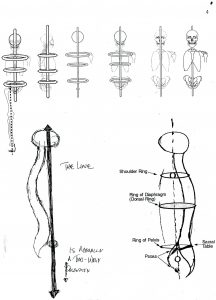
In our expansional balance model the lower back is functionally connected to the legs because our essential movement of walking begins at the top of the sacrum (sacrolumbar hinge). The legs movement goes out of the lumbar spine through the pelvic girdle(pelvic extension). Legs, pelvis and lower back are essentially parts of the same biomechanical unit. Unrolling exercise is very useful to experience the pelvic extension. The standing up is essentially created by the downward pushing of the feet.
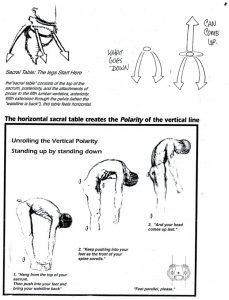
Any deviation from the natural alignment of the body around the vertical line means that the walking pattern is not efficient. This creates a pattern of abnormal myofascial tensions that leads to a chronic lower back pain.
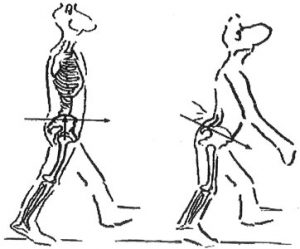
2) Touching is the final arbiter in our assessment process. Our hands are the most powerful “diagnostic” tool. Through palpation we can evaluate all the tensions and restrictions in the soft myofascial network.
As we have already discussed in other articles, it would appear that there is an important connection between the myofascial web and the energetic system of Traditional East Asia Medicines. So our structural approach is linked to the energy lines system. It means that our palpation is essentially “touching” the energy lines to feel where the tensions and the blockages are.
Treatment
An effective management of any lower back dysfunction must include manual manipulations for re-organizing the balance of the legs and the pelvis. Our treatments combine different therapeutic bodywork modalities (structural bodywork, neuromuscular therapy, Tok Sen, Gua Sha).
Step 1: establishing the pelvic extension that means to find the connection between the movement of the legs and the top of the sacrum.
Step 2: Relate the pelvic extension to the lumbar spine. The movement of the legs is connected to the lumbar spine through the pelvic girdle.
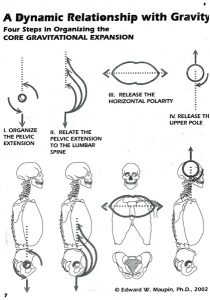
There are two muscles that are keystone for organizing the pelvic extension: psoasand piriformis.Psoas role is to support the lumbar spine from the front. It is the main core muscle connecting the leg to the top of the sacrum (sacrolumbar hinge) and to the lumbar spine.The swingingin a proper walking pattern must come from the psoas. Piriformismuscles connect the legs to the sacrum and their role is supporting the sacrum from the front.
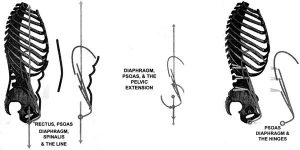
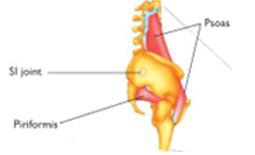
These are the 2 main core muscles supporting our sacro-lumbar spine. They are structurally connected to the visceral fascia surrounding and protecting the abdominal and the pelvic organs. So any visceral dysfunction could create lower back problem. The psoas muscles are in a close relationship with the kidneys and the nervous lumbar plexus.
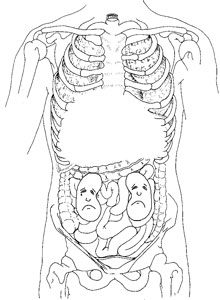
Piriformis and sciatic nerveshare the space in the pelvic area. Then a chronic contraction of piriformis can compress the sciatic nerve leading to a local and/or radiating pain in the lower back, buttocks and often down the leg (“sciatica pain” and “piriformis syndrome“).
The ancient Taoists discovered that “negative emotions”can accumulate in the abdominal area and obstruct the flow of vital energy (“Chi”) to the organs. Our lower back pain management includes visceral manipulations (Chi Nei Tsangand Karsai Nei Tsang) to release all the abdominal tensions and to make energy flow for a long term healing.
In conclusion our structural and energetic approach to treat lower back pain is a Body-Mind method which focuses on the interaction between the physical body and the emotions.
Bibliography
“Rolfing : re-establishing the natural alignment of the human body for vitality and well-being”, Ida Rolf
“A dynamic relation to gravity”, vol.1 and 2, Ed Maupin
“Structural metaphor”, Ed Maupin
“Neuromuscular therapy”, Jack Baker
“Sen healing bodywork”, Itthidet Manarat Ongdam
“Chi Nei Tsang”, Mantak Chia
Chronic Myofascial Pain and Dysfunction:
Assessment and Treatment of Lower Back Pain
Stefano Beconcini, MSc Physics, Wellness Consultant, Pakua Integrative Health Clinic, Chiang Mai
sbeconcini@hotmail.com
